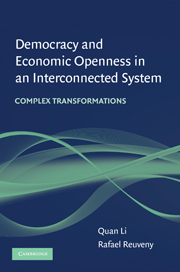References
Published online by Cambridge University Press: 05 June 2012
- Type
- Chapter
- Information
- Democracy and Economic Openness in an Interconnected SystemComplex transformations, pp. 309 - 336Publisher: Cambridge University PressPrint publication year: 2009



